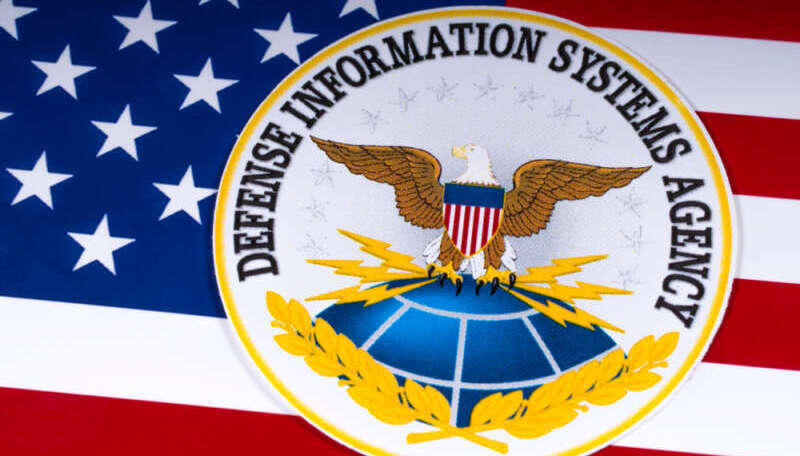
The Defense Information Systems Agency (DISA) has released a new technology watchlist highlighting specific technology capabilities it will go after in fiscal year (FY) 2024, with artificial intelligence (AI) tech coming in first on the list.
During DISA’s annual Forecast to Industry event on Nov. 6, Steve Wallace, the agency’s chief technology officer (CTO) and director of emerging technologies, explained that DISA is taking a more comprehensive approach to analyzing AI capabilities and their potential use cases.
In its FY2024 tech watchlist – an annual broad inventory of over two dozen new technologies the agency has identified as areas of interest – DISA lists several items covering specific capabilities and issues related to AI, including leveraging large language models and employing guardrails to AI development and deployment.
The push for a more comprehensive approach comes as the Defense Department (DoD) pushes for improved and responsible deployment of AI with the release of its Data, Analytics, and AI Adoption Strategy.

“There is nothing more important than the ability to operate a system that you deliver,” Wallace said. “You could deliver the most spectacular, exquisite capability in the world, but if it is too hard to operate then you’ve not done a whole lot because it’s likely down more than it is up,” he said.
Wallace explained that DISA is trying to understand how it will insert AI into its capabilities, and that the latest version of the technology watchlist will help that effort.
For example, AI operations is one focus area that the agency plans to tackle. That area came out of conversations DISA officials had with the Defense Innovation Unit about an AI-enabled prototype it has in the works.
The prototype is “taking log sets from given infrastructure components and given systems and then using a model to train itself over the course of weeks or months to do predictive analysis or predictive reliability analysis,” Wallace said.
He explained that DISA intends to learn lessons from the prototype work to improve how it addresses vulnerabilities within the DoD’s networks by using AI to predict them far in advance.
DISA also has added to tech watchlist an “AI Trust, Risk, & Security Management” focus area to explore how the Pentagon can keep pace with adversaries’ use of AI, while also identifying technology guardrails DISA will need to implement.
Under this focus area, Wallace explained that publicly available large language models are one of those areas of concern.
“The department has a number of concerns against querying those commercial, large language models,” Wallace said. “How are we going to protect ourselves? How are we going to deal with that until such time that these models exist in a [government] cloud or higher environment?”
Another area of interest DISA will be looking at is “concierge AI” – formally named generative AI in DISA’s FY2023 tech watchlist. Currently, that area of interest sits on the “planning” subdivision of the watchlist, meaning the agency understands how it could impact and integrate into missions.
“What we’re looking for out of a concierge AI … is the idea of having for the business side of the house that ChatGPT-like experience of being able to interact and ask questions of data sets,” Wallace said. He added the agency has plans to award an Other Transaction Agreement for a prototype of the capability in FY2024.
Technical Strategy Underway
The watchlist offers a snapshot of DISA’s technological endeavors. In addition to the watchlist, the agency has a technical strategy in the works that will serve as a more specialized counterpart to DISA’s overall strategy, Wallace said.
The technical strategy is still in its first draft, but Wallace highlighted three main points it will cover: simplification of systems, integration across the agency, and iterative delivery of new capabilities.
Those points echo DISA Director Lt. Gen. Robert Skinner’s comments during his keynote at Forecast to Industry event, and Wallace explained that the agency is “driving hard to simplify” the capabilities that it delivers.
“Gone are the days of the ‘best of breed for every given capability’,” Wallace said. Previously, he continued, a lack of simplification often caused failures in the integration of capabilities, and “you end up with a fragile system that when one thing goes out of whack or one thing changes, it never goes well for anyone.”
“That absolute drive to simplify a capability – that doesn’t mean that it’s easy,” Wallace said. “It’s more difficult. But getting down all the way as deep as you can within the capability to simplify it as much as possible, that adds robustness, survivability, and scalability.”
In addition, under the “integration” line of effort, the agency will look at how it integrates capacities and ensures that technical capabilities are not duplicated and remain consistent.
Wallace explained that under the “iteration” line of effort, the agency will look at continuous improvement. But under this effort, Wallace called on industry to help the agency understand “how to continue to deliver capabilities in a meaningful rapid way and not let [them become] stale for the next several years.”
Tech Workforce Priorities
Like many other agencies in the Federal government, DISA is investing in growing and upskilling its workforce.
Included in this line of effort, Wallace explained, is ensuring a “yin-yang relationship” between the agency’s programmatic team and technical staff. He explained that to establish successful programs and capabilities, the agency requires a technical lead and an equally strong programs team.
“From a technical background, you can’t leave us to our own devices to deliver capabilities because we will continually polish that rock until it’s nothing but dust. On the other side, the programmatic team needs that technical backing and technical help to deliver capabilities,” Wallace said.
The agency is also drafting a new strategy to establish a “technical chain of command,” which has never officially established. Currently, the document is in the hands of several of the agency’s technical directors undergoing review.
A component of the new strategy will be re-establishing a deputy CTO. According to Wallace, this role existed within the agency years ago, and to create a “technical chain of command,” DISA brought the role back.
Korie Seville, senior technical advisor for the Hosting and Compute Center, will serve as DISA’s first deputy CTO for Compute. The goal is “eventually to have deputy CTOs in many of [DISA’s] major categories across the agency,” Wallace said.
